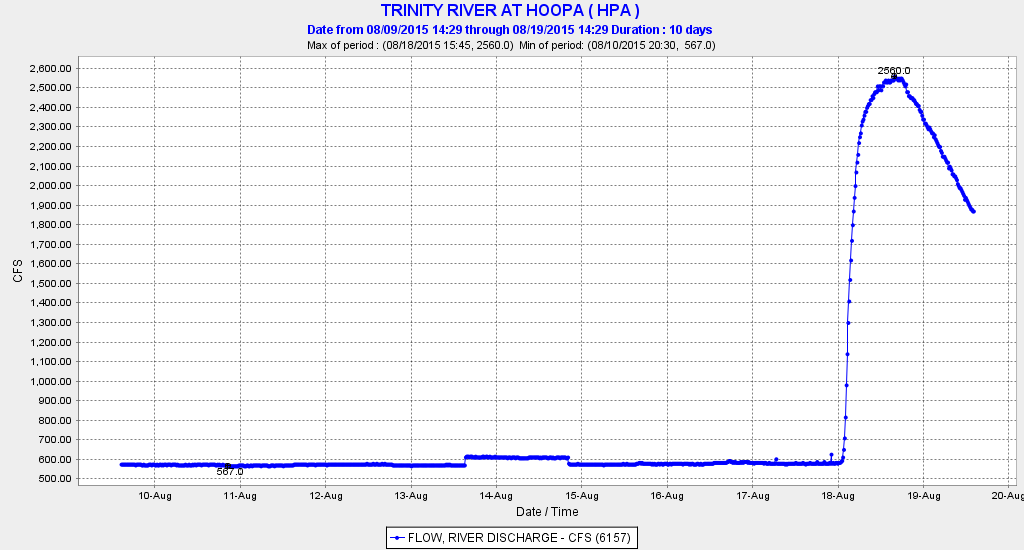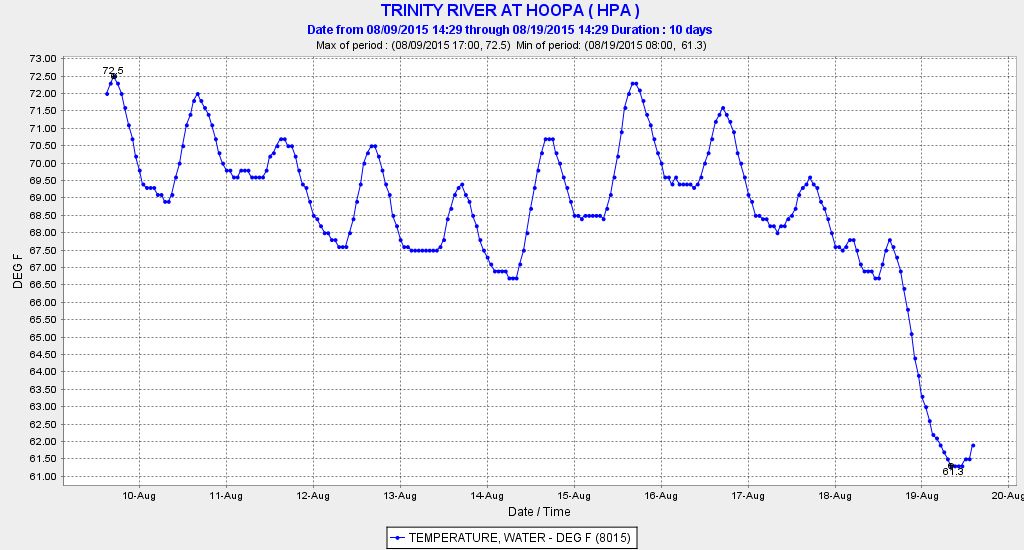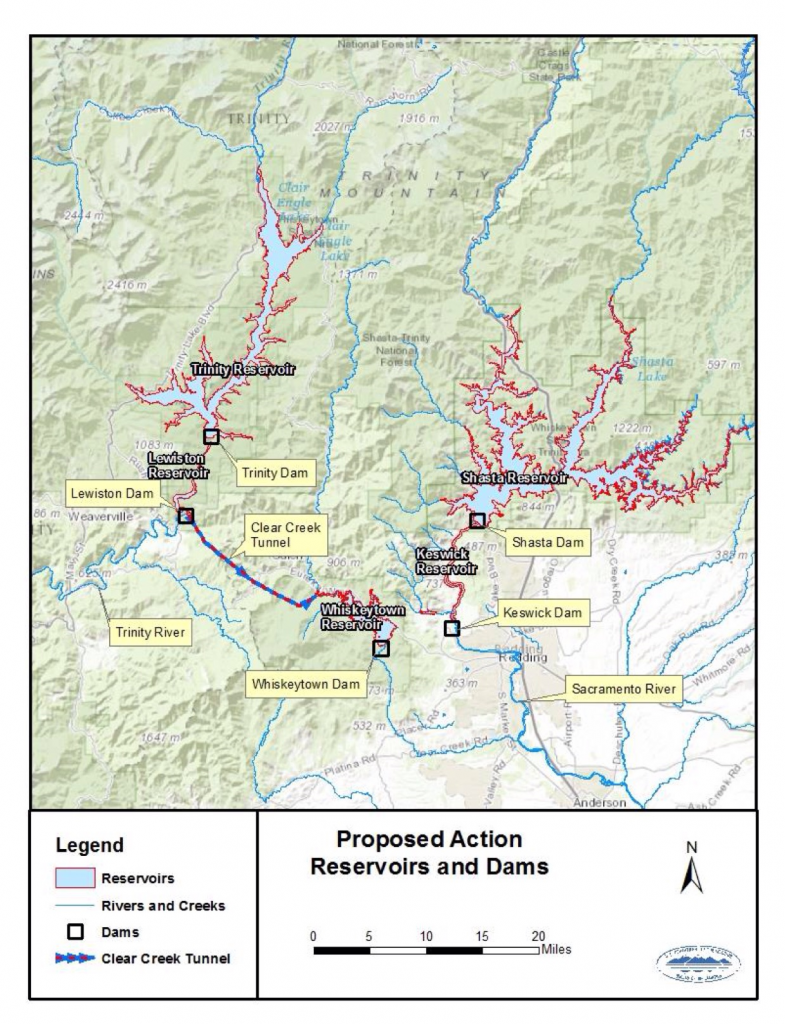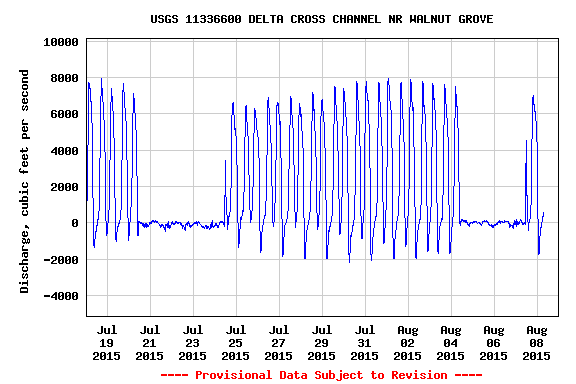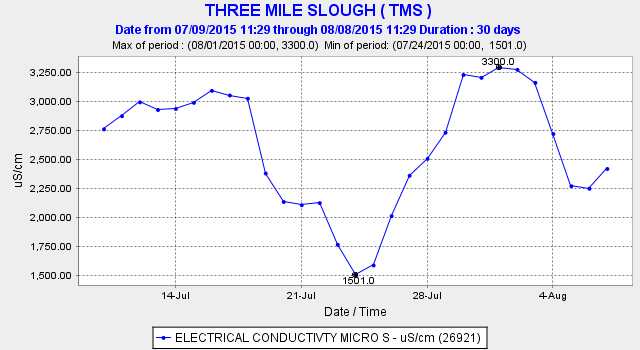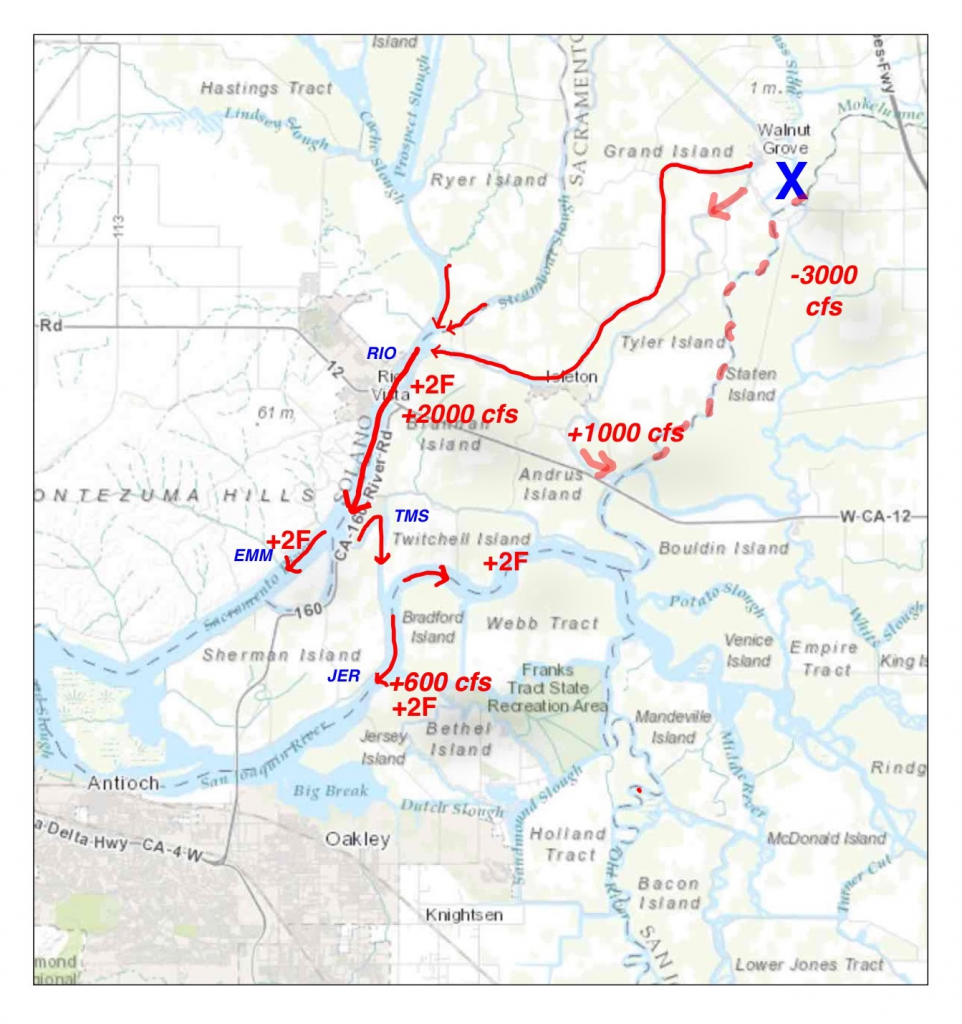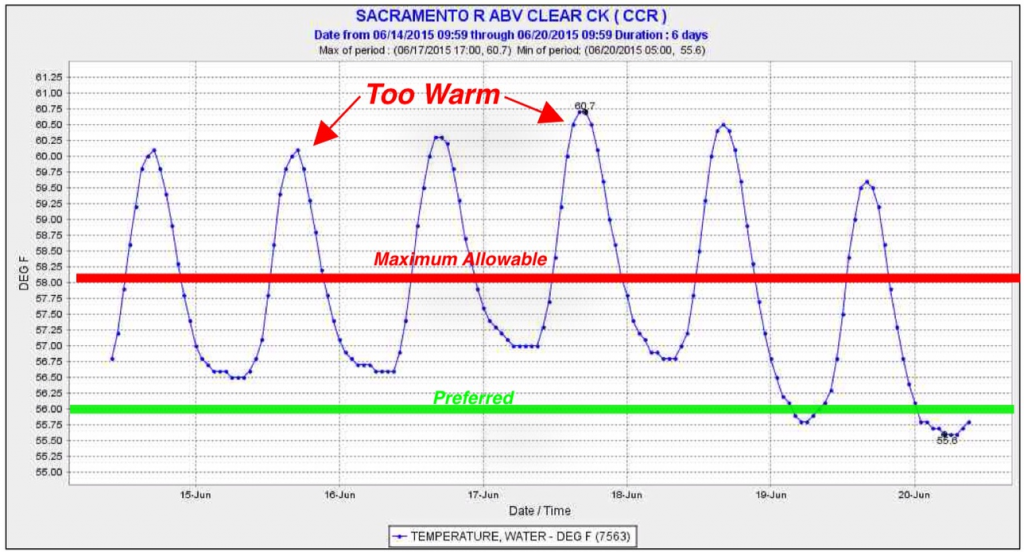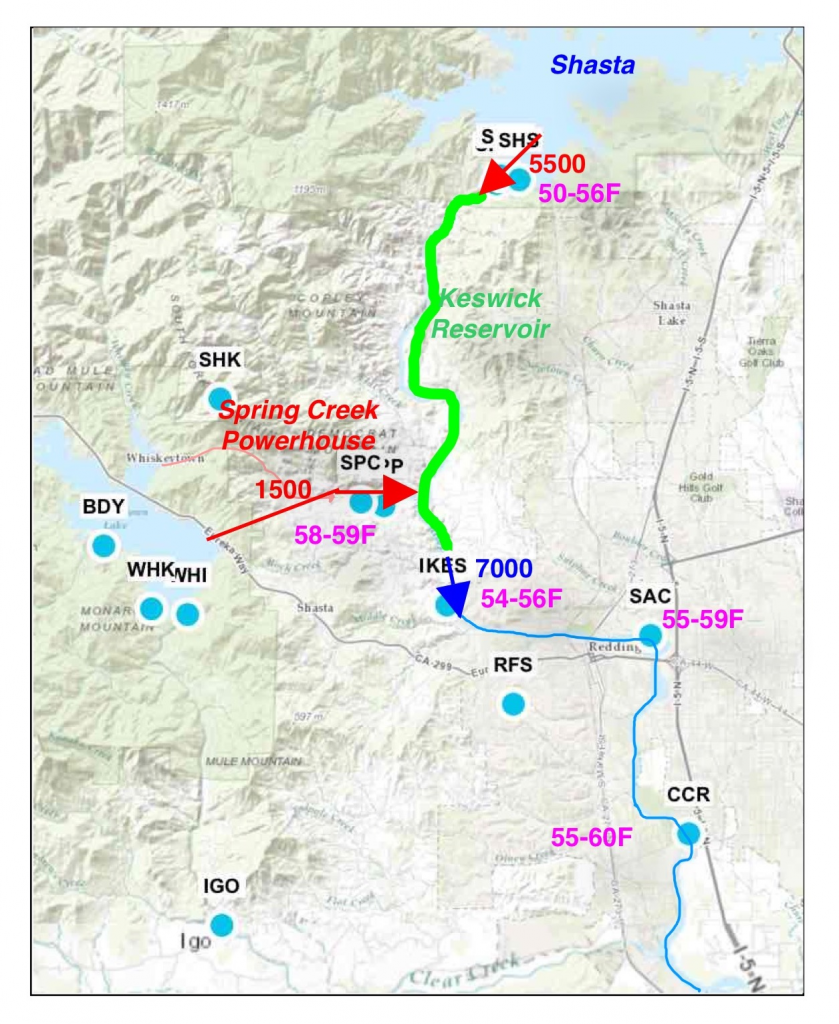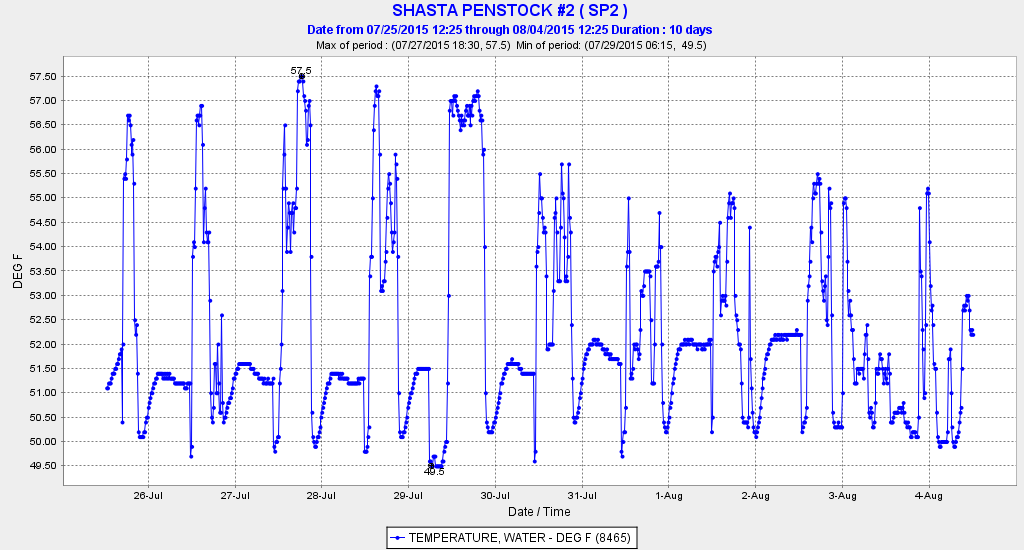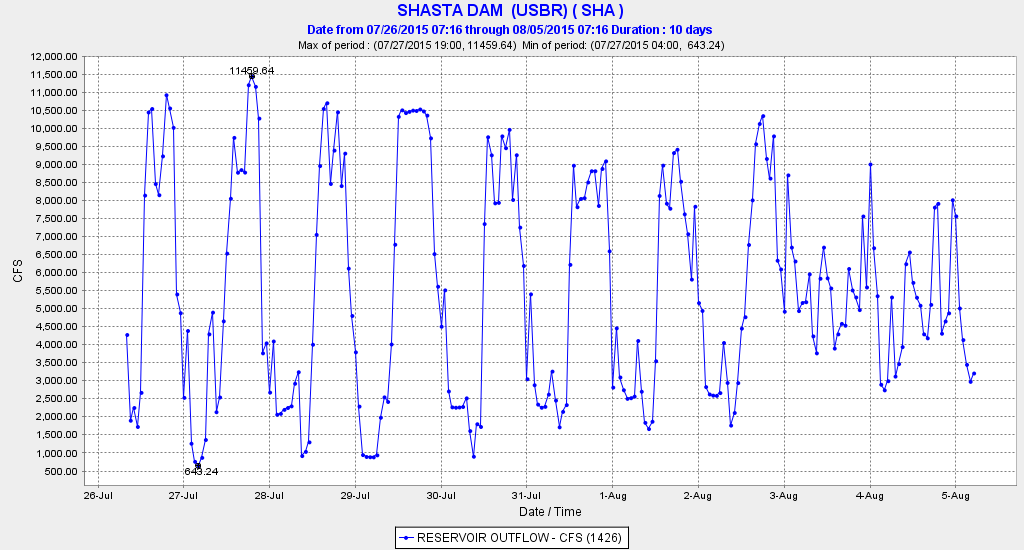Minimum carryover storage for Trinity Reservoir is supposed to determine Trinity exports to the Sacramento River basin. In the driest years (certainly 2015 would be considered such a year), exports to the Sacramento are to be minimized to meet minimum instream flow and water temperature requirements on the Trinity River to save Klamath-Trinity salmon from mass die-offs as occurred in 20021. The low probability of refilling of Trinity Reservoir, as compared to Shasta Reservoir, necessitates the restriction. Yet this summer, three-quarters of the 2000-cfs of water being released from Trinity Reservoir is going to the Sacramento River. Low flows in the Trinity and lower Klamath are again threatening Klamath-Trinity salmon, resulting in Reclamation having to triple Trinity River flows as of August 22 (Figure 1). The added water is coming from the already-depleted Trinity Reservoir, while the 1500-cfs export to Sacramento Basin water users continues.
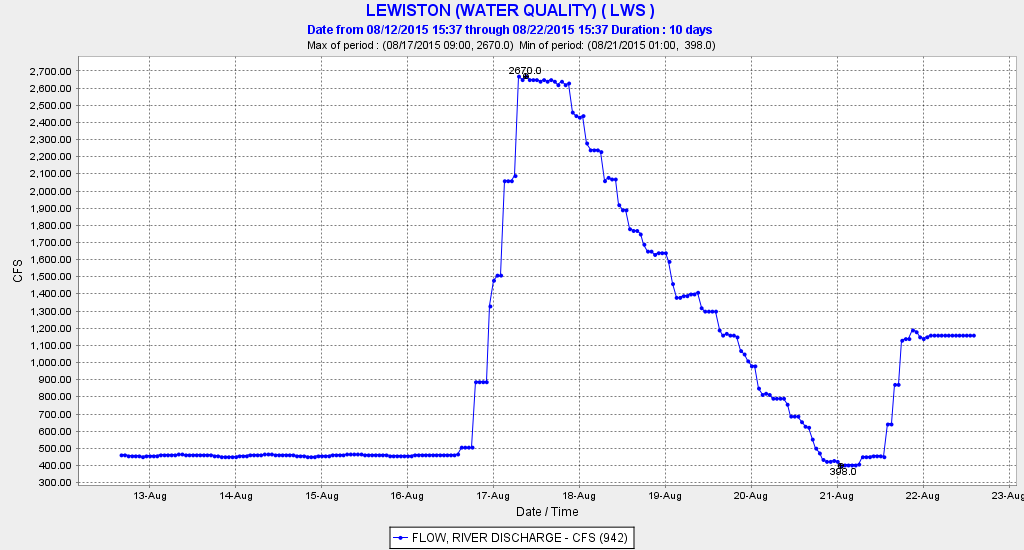
Figure 1. Trinity-Lewiston Reservoir releases to lower Trinity River in mid August 2015. Base required minimum flow is 450 cfs. Flow pulse from August 17-20 was for Hoopa tribal ceremony. New release (1150 cfs) to cool river commenced on August 21.
Reclamation tries to justify the transfer of Trinity water as needed to save Sacramento Winter Run Chinook salmon below Shasta Reservoir, when the transfer actually puts the Sacramento salmon at greater risk2. The transfer water passes through Whiskeytown Reservoir, from which it is released to the Spring Creek Powerhouse to the Sacramento below Shasta. The 50°F water from the Trinity Reservoir cold-water pool transferred to Whiskeytown warms nearly 10 degrees (58.5-59.5°F) before passing through the Spring Creek Powerhouse on Keswick Reservoir. Water from Whiskeytown would be even warmer if not for a floating water curtain installed at the reservoir outlet in 2011 to reduce water temperature of releases to the Sacramento basin (Figure 2).3
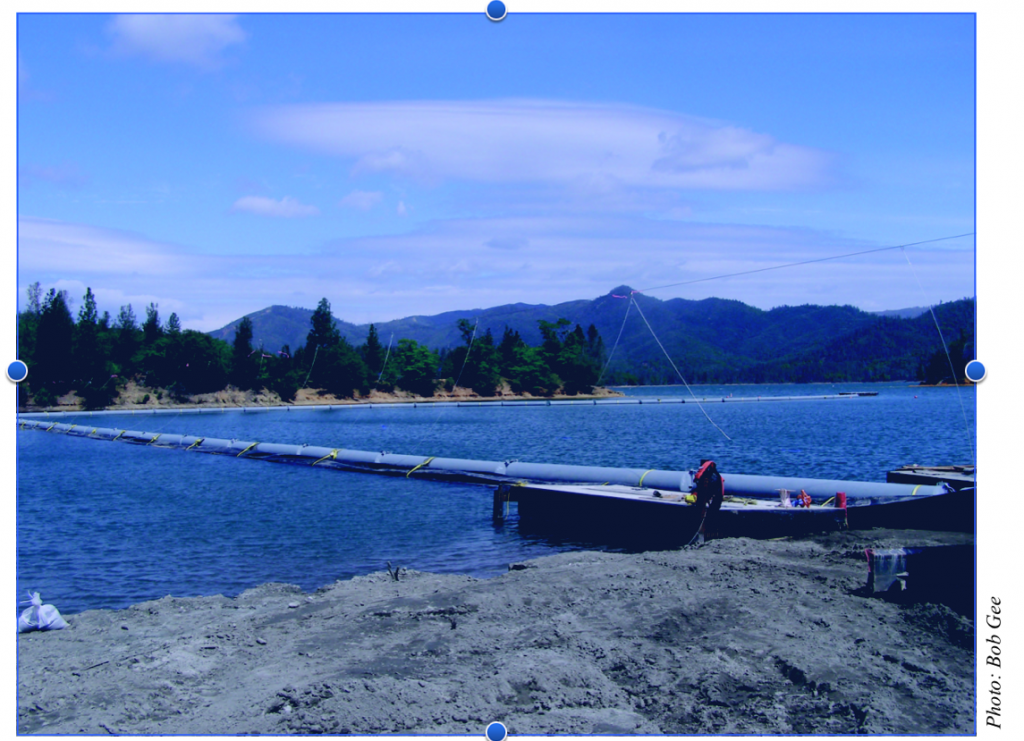
Figure 2. Floating boom of water curtain in Whiskeytown Reservoir outlet cove to Spring Creek Powerhouse in Sacramento basin.
The 59°F water entering Keswick Reservoir must be cooled by Shasta 50°F cold-water pool water to meet the 54-56°F required release temperature of the 7000 cfs prescribed release of water into the Sacramento River above Redding. Because Shasta releases are a blend of cold and warm water to meet downstream required temperatures, the added burden of cooling the Trinity water adds to the demands on the critically low cold-water pool remaining in Shasta Reservoir.
The limited Shasta cold water pool has already resulted in the State Board’s weakening of the average daily water temperature standard of 56°F to protect Winter Run salmon eggs to 58°F at Redding. The weakened standard will result in some egg mortality. There remains concern whether the cold water pool releases can be sustained through the summer, unlike last summer when coldwater ran out in early September leading to the loss of 95% of the salmon production.
Further exacerbating the above problems is the continuing operation of all three storage reservoirs (Trinity, Whiskeytown, and Shasta) for peaking power (Figure 3). Releases for peak power demands occur during afternoon hours when reservoir waters are at their warmest (Figure 4). This specific operation pattern has lead to high afternoon water temperatures in Keswick releases to the Sacramento River, and most recently to higher night release temperatures (Figures 5 and 6). The standard remains 58°F average daily water temperature. Egg mortality increases above 56°F.
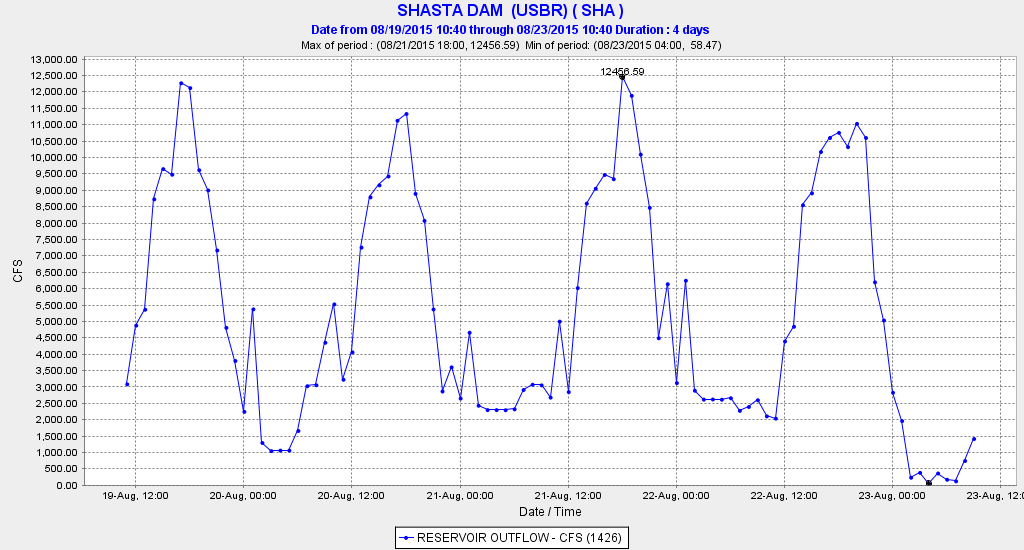
Figure 3. Release pattern at Shasta Dam in recent days. Peak releases to five powerhouses occurs in afternoon consistent with power demands. Note night releases having virtually been eliminated on August 23 in favor of daytime releases.
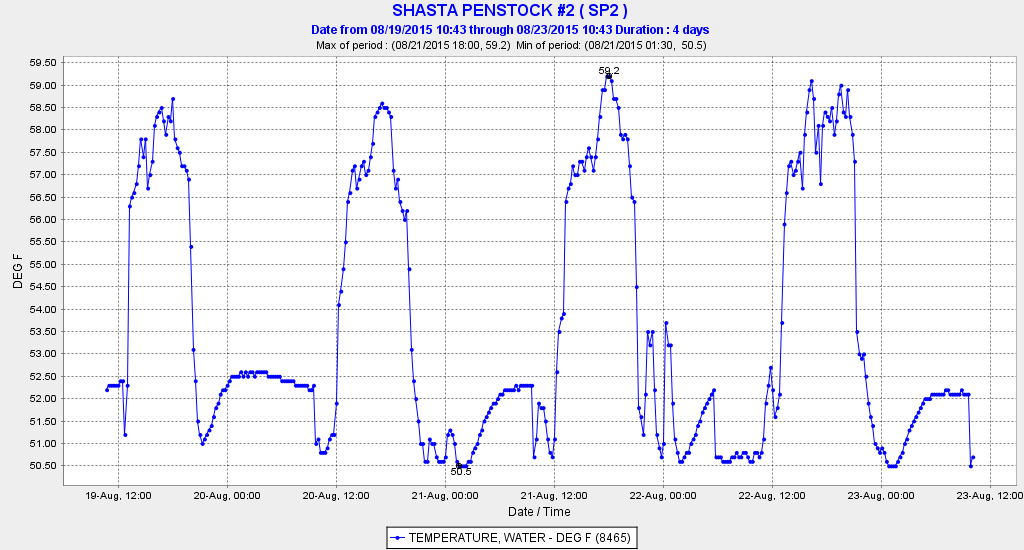
Figure 4. Temperature of water in penstocks to powerhouse from Shasta Reservoir. Note warmest water occurs during peak flows in afternoons.
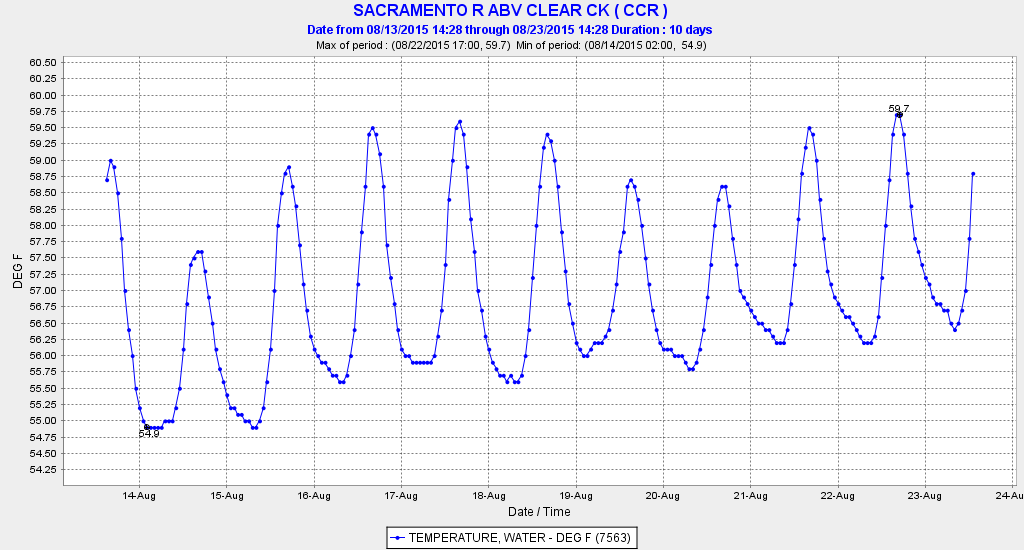
Figure 6. Water temperature of Sacramento River in Redding at CCR gage compliance point. Note average daily temperature approaches 58°F standard. Salmon egg mortality increases above 56°F.
- Trinity exports are also to be minimized to save carry-over storage for future Sacramento basin needs. ↩
- http://calsport.org/fisheriesblog/?p=384 ↩
- To date, the curtain is performing as designed. It achieves an approximate 2 to 4 degree drop in water temperature.
http://www.fabricatedgeomembrane.com/wp-content/docs/articles/fgi_jan2012_whiskeytown%20temp%20curtain%20pub%20file%20FI.pdf ↩



